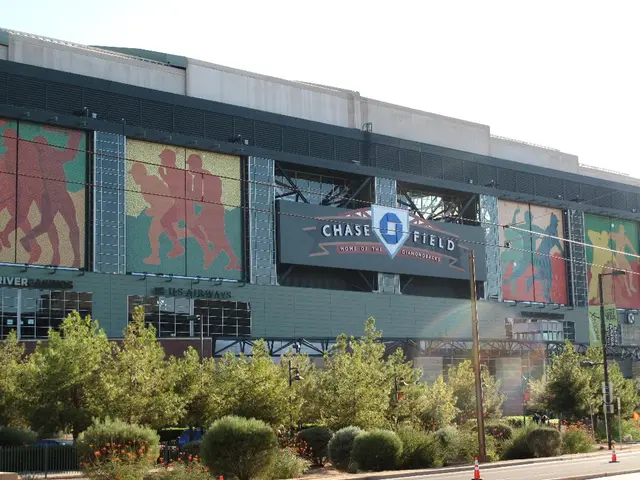Ranking of Australia's Iconic Powerful Sedans from Yesteryears
Top Classic and Modern Australian Muscle Cars: A Look Back and Forward
Australian muscle cars have a rich history, with iconic models gracing the roads and race tracks during the 1960s and 1970s. These vehicles, such as the Ford Falcon XB GT, Holden Monaro, Holden Torana GTR, and Chrysler Charger, are renowned for their high-performance engines, cultural impact, and motorsport success [2][5][1].
The Ford Falcon XB GT, for instance, with its 351 cubic inch V8, became an icon, partly due to its appearance in "Mad Max" as the Interceptor. On the other hand, the Holden Monaro and Torana series were celebrated for their agility and competitive success in racing. The Chrysler Charger combined muscle car performance with bold styling and earned a cult following [2].
As we move into the modern era, later generations of the Holden Commodore and Ford Falcon continued Australia's legacy in high-performance cars. These models evolved from classic muscle roots into more refined performance sedans with advanced technology, maintaining cultural popularity and motorsport success [2].
Notable Classic Cars
The 1969 Holden HT Monaro GTS350, with its larger and more powerful 5.7-litre V8, won the Bathurst race in 1970. The 1971 Ford XY Falcon GT-HO Phase III, often considered the poster child for racing improving the breed, was a significant evolution of its predecessor. The 1972 Holden LJ Torana GTR XU-1's victory in the 1972 Bathurst race flipped the script on the trend of V8 dominance [1].
The 1972 Valiant Charger R/T E49, despite having a straight-six engine, was declared the fastest accelerating Aussie muscle car ever by Wheels magazine. The 1977 Holden LX Torana A9X was a homologation special with improved handling and brakes, but its road-going version was relatively mild compared to the race car [1].
Notable Modern Cars
The 1986 Holden VL Calais Turbo was the fastest locally-built muscle car with only six cylinders, marking a new era in the Aussie muscle car scene. The VL Turbo introduced compressor surge and blow-off valves as part of the Aussie muscle car soundtrack [1].
The 1985 HDT VK Group A is considered the true king of 1980s Commodores, known for its powerful engine and light weight. The 1986 Holden VL Calais Turbo significantly changed the Aussie muscle car landscape [1].
The 1971 Ford XY Falcon GT-HO Phase III was a significant evolution of the XR GT, with a pole time 10.4 seconds quicker than its predecessor at the 1971 Bathurst 500. The 1967 Ford XR Falcon GT was the first Australian muscle car with eight cylinders under the hood, changing the narrative that big V8s were too heavy and cumbersome to win at Bathurst [1].
The 1973 Ford XA GT Coupe RPO83 was a secretly produced muscle car, with varying content between each car. It is believed that 252 RPO83-optioned cars were built, with 131 sedans and 121 coupes [1].
The 1982 Ford XE Fairmont ESP 5.8 was a tasty cruiser, built to get rid of remaining V8 stock, with only 178 examples built with a 5.8-litre (351ci) Cleveland engine [1].
The 1972 Valiant Charger R/T E49 eked out extra power from its 4.3-litre straight-six and installed a four-speed gearbox [1].
The VL Calais Turbo was the first locally-built muscle car since the E49 Charger to have only six cylinders [1].
The 1972 Holden LJ Torana GTR XU-1, despite having a smaller engine compared to its contemporaries, won the Bathurst race in 1972, bucking the trend of V8 dominance [1].
What makes these cars notable
Classic cars are renowned for their high cubic inch V8 engines producing powerful performance, their roles as cultural icons during the muscle car golden era in Australia, motorsport success, including touring car racing, and connections to surf and youth culture in the 1970s, contributing to their mystique [2][5][1].
Modern Australian muscle cars embody refined, tech-enhanced continuations of that tradition through the 21st century, with evolution of classic designs into technologically advanced vehicles, continued success and popularity in Australian motorsport, and modern engineering improving reliability and performance while honoring legacy [2][5][1].
The nuclear family's upper-middle class lifestyle in the 1970s often included the ownership of a powerful muscle car like the Holden Monaro or Ford Falcon, which were not only status symbols but also regarded as essential components for weekend sports activities.
As the 21st century progresses, the luxury car market in Australia continues to embrace the essence of muscle cars, with modern vehicles like the latest Holden Commodore and Ford Falcon offering high-performance engines, culturally significant styling, and continued dominance in motorsport, ensuring the legacy of Australian muscle cars in sports culture and lifestyle choices.







